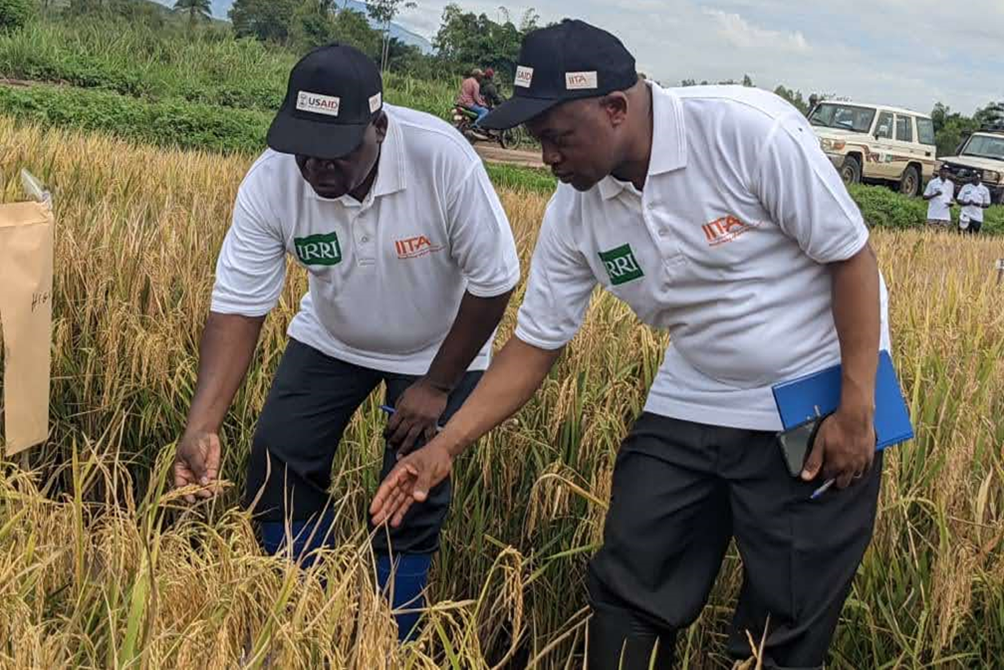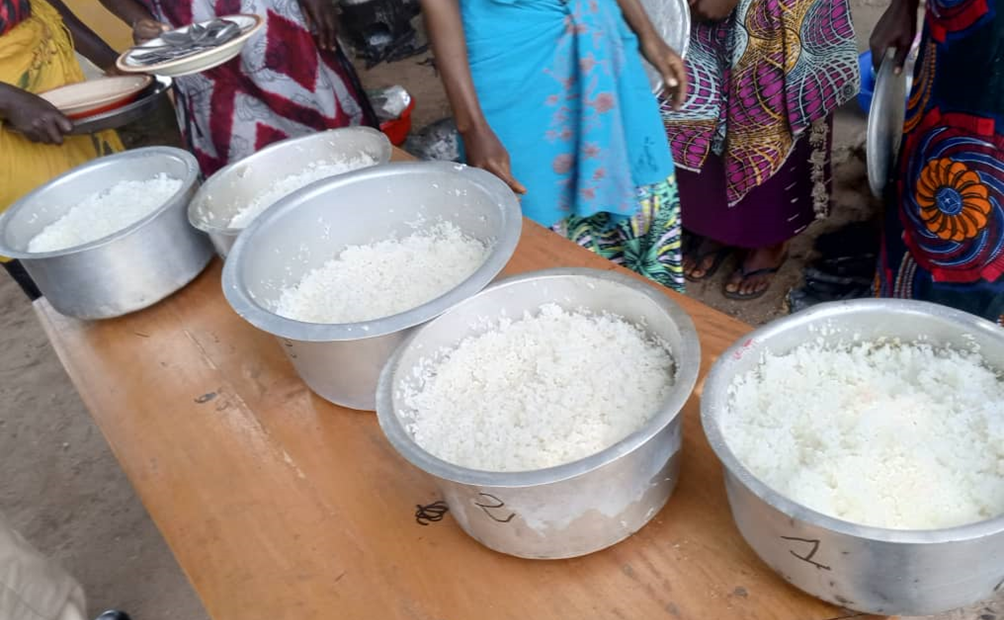IRRI releases four rice varieties in DRC

IRRI released four rice varieties in the Democratic Republic of Congo (DRC) under the Great Lakes Accelerated Innovation Delivery Initiative Rapid Delivery Hub (AID-I GLR), which is also known as the Kugwiza Project. In collaboration with the International Institute for Tropical Agriculture (IITA), alongside other CGIAR Centers and key local stakeholders, IRRI developed rice varieties adapted to the local ecologies of DRC, Burundi, and Rwanda. The initiative aims to improve food and nutrition outcomes in the region by enhancing the value of high-quality, high-yielding rice varieties and rapidly promoting their adoption. AID-I GLR seeks to help 1,200,000 households in Burundi, DRC, and Rwanda.
The newly launched rice varieties, namely: Tengetenge (IR 143725-52 RGA), Kirera Bana (IR 16M1142), Mubusi (IR 19A1137), and Rutete (IR 107015-18-3-1-B), were developed at IRRI’s Headquarters in the Philippines and at the Regional Crop Improvement Hub based at the University of Burundi. These four varieties add to the 56 improved varieties already released in sub-Saharan Africa (SSA) since 2011.

AID-I GLR also provided demonstration plots for rice farmers and researchers to expose them to the best-fit varieties and management options in different agroecological zones. The initiative focused on lowland and high-mid altitude regions where farmers are new to rice production. Partners also received training on rice farming and irrigation management, and were then provided 100 grams of high-yielding rice varieties to validate their performance and encourage adoption.
“In the DRC, the rice sector development is hindered by a lack of improved varieties. Most rice farmers use traditional rice varieties with low yield and quality”, shared IRRI Country Representative for Burundi and DRC Dr. Joseph Bigirimana, “The released IRRI varieties will contribute to boosting rice production in the irrigated lowland ecologies and contribute to food security of the country.” In particular, these varieties are disease-resistant and yield higher than locally grown varieties. They also have good milling recovery and market value, which helps enhance farmers’ income and profit. Breeding of these varieties was carefully designed to meet local consumers’ and market preferences which are non-sticky and good cooking quality and color.